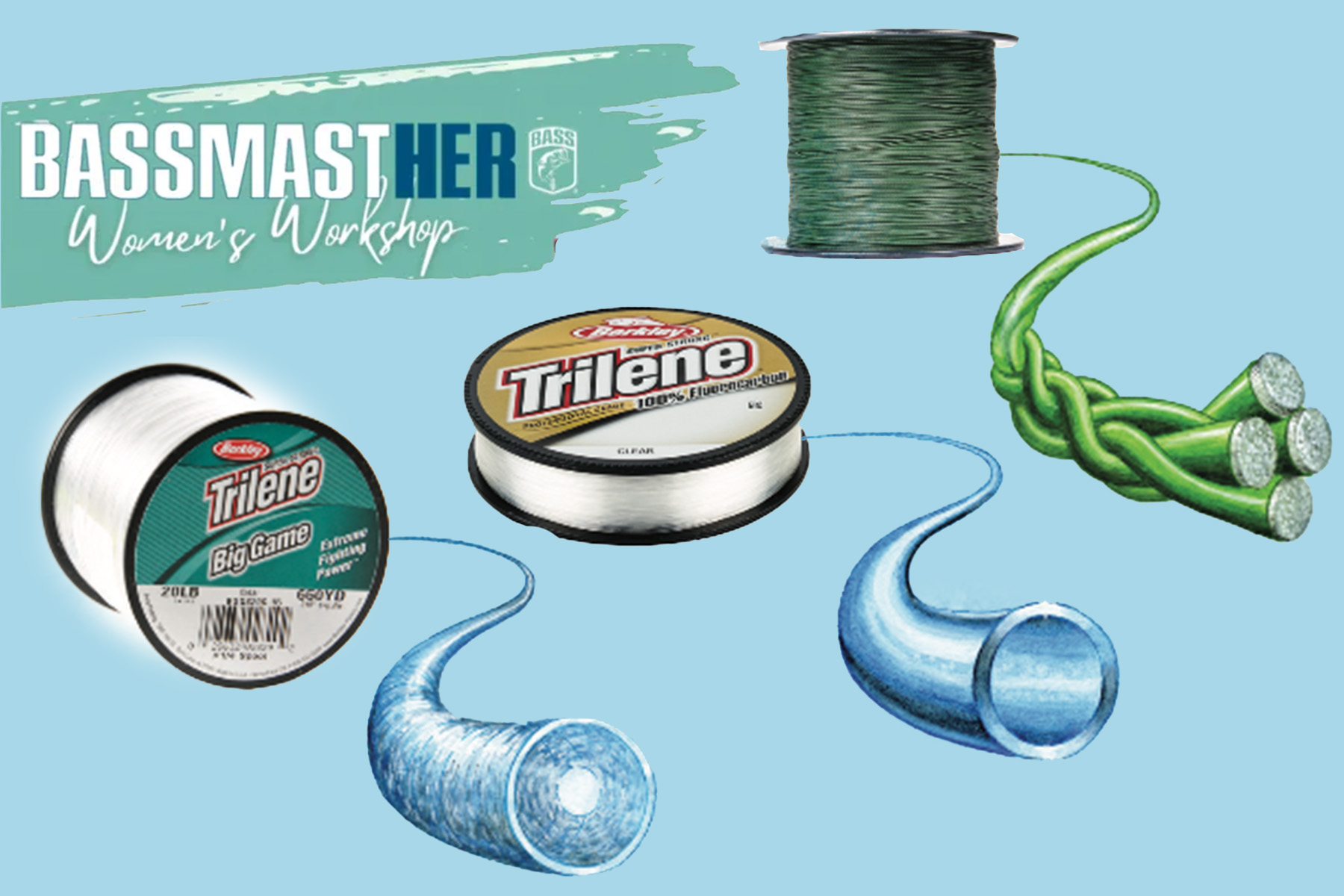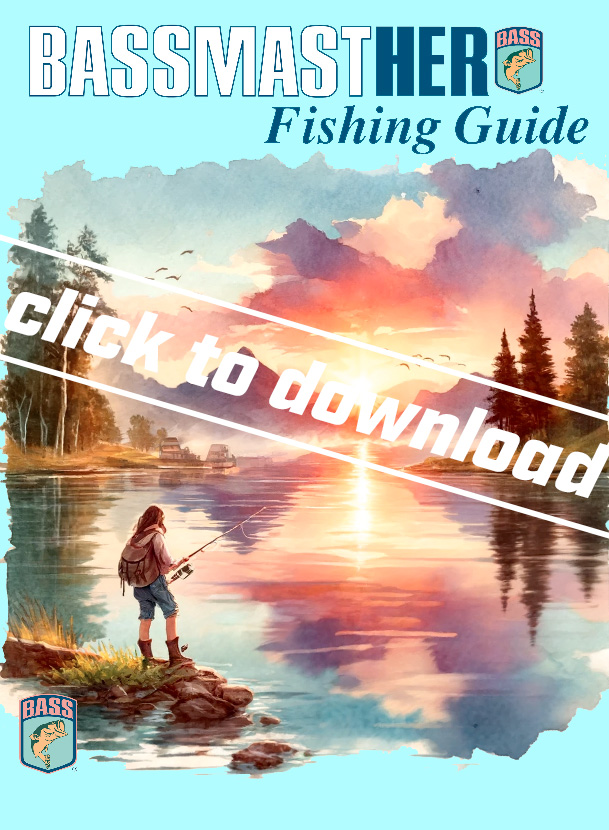
Each type of line has its strengths and weaknesses, and understanding these will help you decide which line to use in different situations.
The three most common types of fishing line in bass fishing are braided line, fluorocarbon line, and monofilament line. In this lesson, we’ll break down the characteristics of each to help you make the best choice for your bass fishing needs.

Braided Line
Braided line is made from woven fibers that create a thin yet incredibly strong line. It’s known for its durability, high tensile strength, and excellent sensitivity. Braided line has very little stretch, which allows for solid hooksets and improved feel for subtle bites.
- Strengths: Braided line is extremely strong for its diameter, meaning you can spool a lot of line onto your reel without taking up too much space. It also has excellent abrasion resistance, making it a top choice for fishing in heavy cover like weeds, rocks, and timber.
- When to Use: Use braided line when fishing in thick vegetation, around heavy cover, or when targeting large, hard-fighting bass. It’s especially useful for topwater baits, flipping, and pitching.
- Pro Tip: Because braided line is highly visible in clear water, it’s often best to pair it with a fluorocarbon leader to make your presentation less noticeable to fish.

Fluorocarbon Line
Fluorocarbon line is nearly invisible underwater, making it an excellent choice for clear water conditions. It’s denser than monofilament, which allows it to sink faster, and it offers better sensitivity than monofilament due to its low stretch. Fluorocarbon is also highly resistant to abrasion, making it durable enough to handle rough conditions.
- Strengths: Fluorocarbon’s near-invisibility underwater makes it perfect for situations where bass may be spooked by visible lines. It also has great sensitivity, allowing you to feel subtle bites, and its resistance to UV light means it won’t break down as quickly as monofilament.
- When to Use: Fluorocarbon is ideal for clear water and finesse techniques, such as fishing with soft plastics, jigs, or when using a Texas rig. It’s also a great choice for deep water presentations where you need your bait to sink quickly.
- Pro Tip: When spooling fluorocarbon, be sure to wet the line to prevent line memory (coiling) and improve casting distance.

Monofilament Line
Monofilament line is the most widely used and budget-friendly fishing line. It’s made from a single strand of nylon, giving it a bit more stretch than braided or fluorocarbon lines. This stretch can be beneficial when fishing with treble-hooked baits like crankbaits, as it provides some shock absorption when a bass strikes.
- Strengths: Monofilament is highly versatile, easy to handle, and has excellent knot strength. It floats, making it a good choice for topwater baits. Additionally, its stretch can help prevent hooks from pulling out when a fish is thrashing.
- When to Use: Monofilament works well for topwater fishing, such as with poppers or buzzbaits, as well as in situations where you need a bit of stretch to absorb aggressive strikes. It’s also great for beginners due to its easy handling.
- Pro Tip: Because monofilament has more stretch, it’s not as sensitive as other lines. Be sure to adjust your hooksets accordingly when using this line, especially at longer distances.
Choosing the Right Line for Your Setup
The key to selecting the right line is understanding the specific fishing conditions and the type of bait you’re using. Braided line offers power and durability in heavy cover, fluorocarbon line excels in clear water and finesse applications, and monofilament line provides versatility with its buoyancy and stretch. Many anglers also combine lines, such as using braided line with a fluorocarbon leader, to get the benefits of both.
Final Thoughts
Understanding the differences between braid, fluorocarbon, and monofilament will help you make better choices based on your fishing environment and techniques. Each line has its own strengths and uses, and knowing when to use each will elevate your bass fishing game. Don’t be afraid to experiment with different lines and combinations to find what works best for your specific style and conditions.





